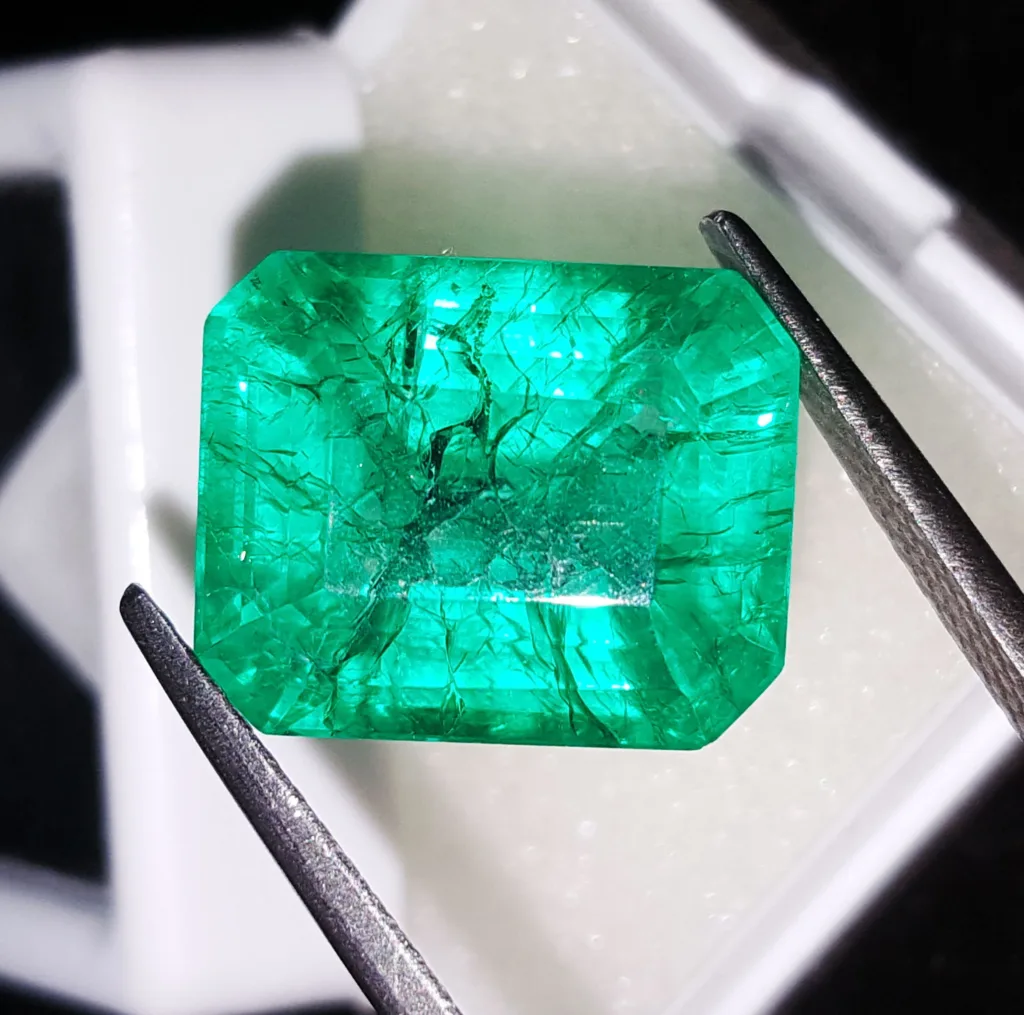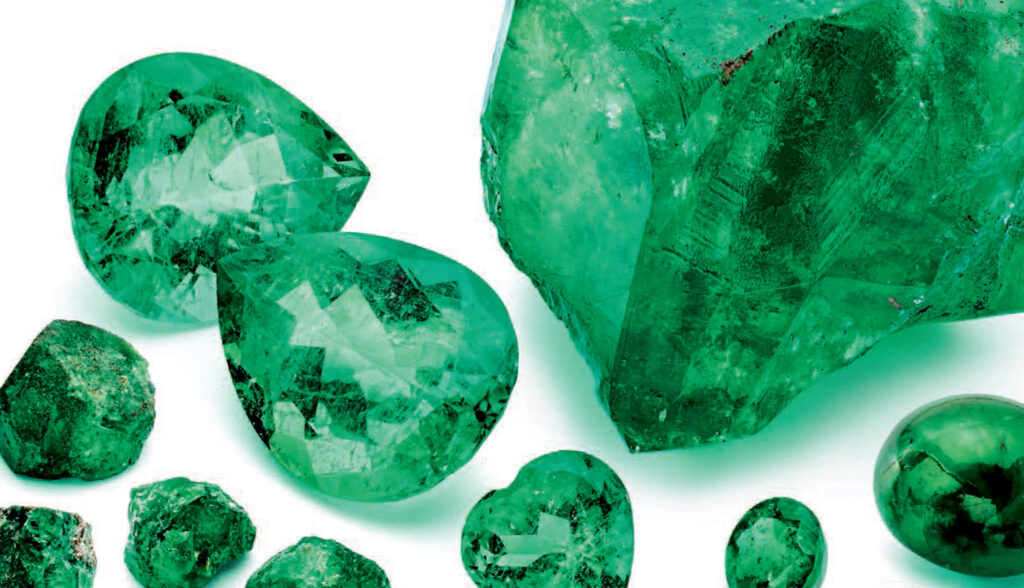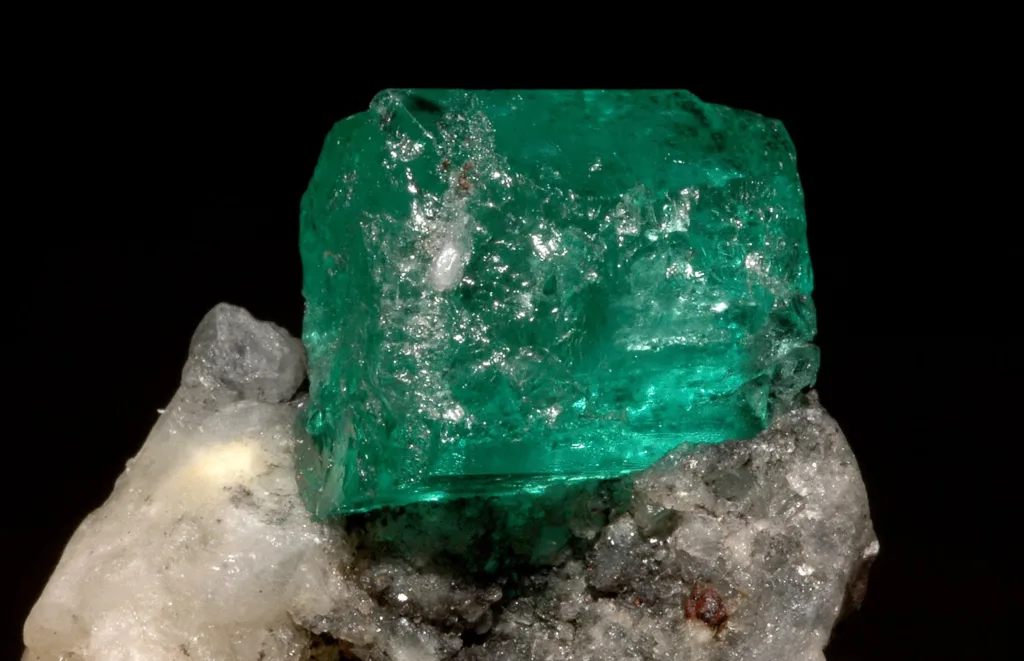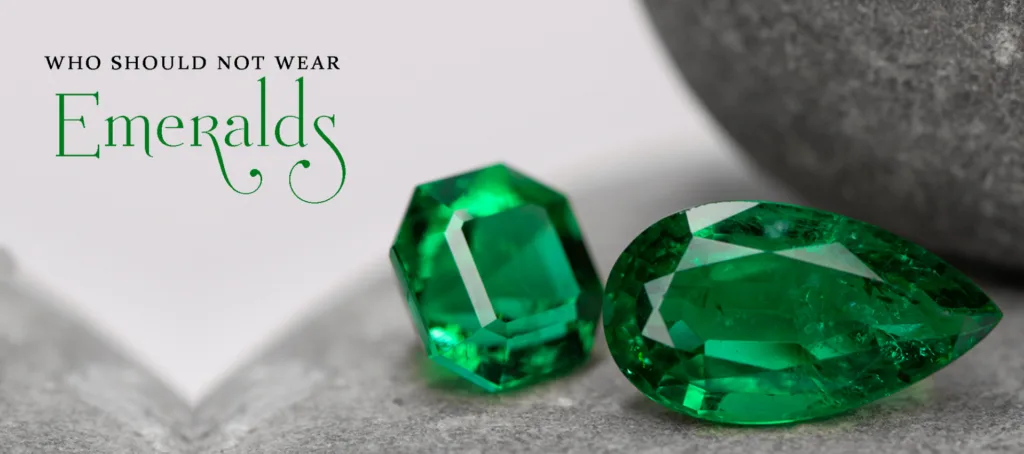Emeralds have captivated humans for millennia with their lush green hue and unparalleled beauty. These stunning gemstones belong to the beryl mineral family and have been prized for their rarity and significance in cultures worldwide. This article delves into the origins, characteristics, and various uses of emeralds, providing a comprehensive insight into why they are considered one of the most valuable gemstones.

Origins of Emeralds
Emeralds are primarily found in select regions of the world, with Colombia being the most renowned source. Other significant deposits are located in Zambia, Brazil, Afghanistan, and Russia. Each location produces emeralds with distinct characteristics, influenced by the geological conditions in which they form.

- Colombia: Often regarded as the finest emeralds, Colombian emeralds are known for their intense green color and high transparency. The Muzo, Chivor, and Coscuez mines are the most famous sources in the country.
- Zambia: Zambian emeralds are typically darker with a bluish-green tint, often containing fewer inclusions than their Colombian counterparts. The Kagem mine is one of the largest sources.
- Brazil: Brazilian emeralds are generally lighter in color and may have a yellowish or bluish undertone.
- Afghanistan and Russia: These regions produce emeralds that are typically smaller but still highly valued for their quality and rich green hues.
Emerald deposits are formed under unique geological conditions. They typically occur in metamorphic and sedimentary rocks, where beryllium-rich fluids interact with chromium and vanadium, giving the gemstones their characteristic green color. The formation of emeralds requires immense pressure and specific temperature conditions, making them rare compared to other gemstones.
Characteristics of Emeralds
Emeralds are distinguished by several key characteristics that determine their value and appeal:

Color
The most critical factor in determining an emerald’s worth is its color. The most prized emeralds exhibit a deep, vivid green with a slightly bluish undertone. The color results from trace amounts of chromium, vanadium, and iron in the mineral composition. The presence of these elements in different concentrations contributes to the variations in color observed in emeralds from different regions.
Clarity
Unlike diamonds, which are valued for their flawless appearance, emeralds often contain inclusions known as “jardin” (French for garden). These inclusions are natural and can enhance the uniqueness of the gemstone. However, excessive inclusions may affect durability and transparency. Most emeralds undergo oil treatment to fill cracks and improve clarity, but untreated specimens with high clarity are exceptionally rare and valuable.
Cut
Emeralds are typically cut into an “emerald cut,” a rectangular or square shape that enhances their color while minimizing stress on the stone. Other cuts, such as oval, round, or pear, are also used but are less common. The emerald cut helps protect the gemstone from fractures, as emeralds have a lower hardness than diamonds and can be prone to chipping.
Carat Weight
Emeralds are measured in carats, like other gemstones. However, due to their density, a one-carat emerald appears larger than a one-carat diamond. Larger emeralds with excellent color and clarity are rare and highly valuable. The price of emeralds increases exponentially with size, especially for stones with minimal inclusions and intense color saturation.
Uses of Emeralds

Jewelry
Emeralds are predominantly used in fine jewelry, including rings, necklaces, bracelets, and earrings. Their vivid green color makes them a popular choice for statement pieces, often set in gold or platinum. Emerald engagement rings have gained popularity due to their unique and vibrant appearance, symbolizing love and devotion.
Symbolism and Cultural Significance
Throughout history, emeralds have been associated with royalty, power, and mysticism. Ancient Egyptians, including Cleopatra, cherished emeralds, believing they symbolized fertility and eternal youth. In modern times, emeralds are considered a symbol of love, wisdom, and rebirth. The gem has been referenced in various ancient texts and was revered by civilizations such as the Incas and Aztecs, who considered it sacred.
Healing and Metaphysical Properties
Many cultures believe emeralds possess healing properties, aiding in mental clarity, emotional balance, and physical well-being. They are thought to promote peace, harmony, and protection from negative energies. In alternative medicine, emeralds are associated with the heart chakra, enhancing emotional healing and spiritual growth.
Astrological Significance
Emeralds are the birthstone for May and are linked to the zodiac sign of Taurus. They are believed to bring prosperity, success, and insight to those who wear them. In Vedic astrology, emeralds are associated with Mercury and are thought to enhance intelligence, communication skills, and creativity.
Investment
Due to their rarity and increasing demand, high-quality emeralds are considered a sound investment. Collectors and investors seek untreated emeralds with rich color and minimal inclusions, as these retain their value over time. Some of the world’s most famous emeralds, such as those owned by royalty and celebrities, have appreciated significantly in value over the years.
Famous Emeralds
Several legendary emeralds have fascinated collectors and historians. Some notable examples include:
- The Mogul Mughal Emerald: A historic 217.80-carat emerald inscribed with Islamic prayers, dating back to 1695.
- The Duke of Devonshire Emerald: One of the largest uncut emeralds, weighing approximately 1,383.93 carats.
- The Bahia Emerald: A massive emerald cluster discovered in Brazil, weighing over 750,000 carats.
- Cleopatra’s Emeralds: Believed to have been sourced from ancient Egyptian mines, these emeralds were part of Cleopatra’s legendary jewelry collection.
Conclusion
Emeralds, with their breathtaking beauty and historical significance, remain one of the most coveted gemstones. Their origins, characteristics, and diverse applications make them a fascinating subject for gem enthusiasts and collectors alike. Whether worn as exquisite jewelry, appreciated for their symbolic meanings, or considered a valuable investment, emeralds truly embody the essence of nature’s green treasure. As technology advances, new treatments and synthetic alternatives continue to emerge, yet the allure of natural emeralds remains timeless. The appreciation for these magnificent gems is unlikely to fade, ensuring their place as one of the world’s most treasured gemstones for generations to come.




































